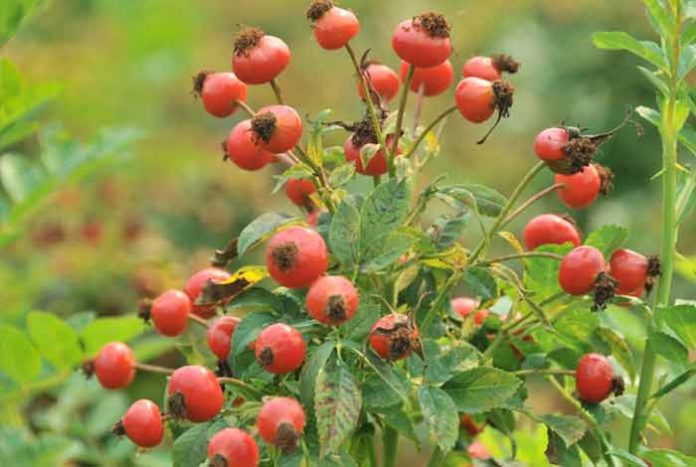
Rose hips are fruits from rosebush. Dr. Andrew Weil says that when the petals fall off from the flowers, these fruits develop. Some of them are red while others are orange.
The size ranges from that of a cranberry to a small plum. They have seeds and the pulp is tart. The vitamin C content of rose hips is exceptionally high; even greater than many citrus fruits. At the time of the World War II, when there was less import of citrus products, rose hip was used in Britain for making the famous rose hip syrup.
Dr. Andrew Weil further adds that rose hips also have vitamins A, D, E, B3 along with citric acid, bioflavonoids, malic acid and fructose. Tea prepared from rose hips can help treat infections and diarrhea. Most Americans don’t grow usable rose hips. And, in some parts of the U.S., hips from wild roses can be easily collected.
If you are able to find them, you can use these to make tea, syrup, jam or jelly. Do not go for a bush that has been subjected to pesticides. If at all it has been treated with pesticides, make sure it is labeled safe for consumption. Do not use aluminum utensils for cooking and stirring as it will deplete the concentration of vitamin C.
To make tea from rose hips, wash the hips, chop them and cover with cold water and boil it. Let it remain covered and put the gas on simmer for half an hour. Next, strain the tea and make it sweet if you like. Rose hip tea is also available in many health stores. Rose hip is a wonderful source of several trace minerals and many other healthy compounds.










